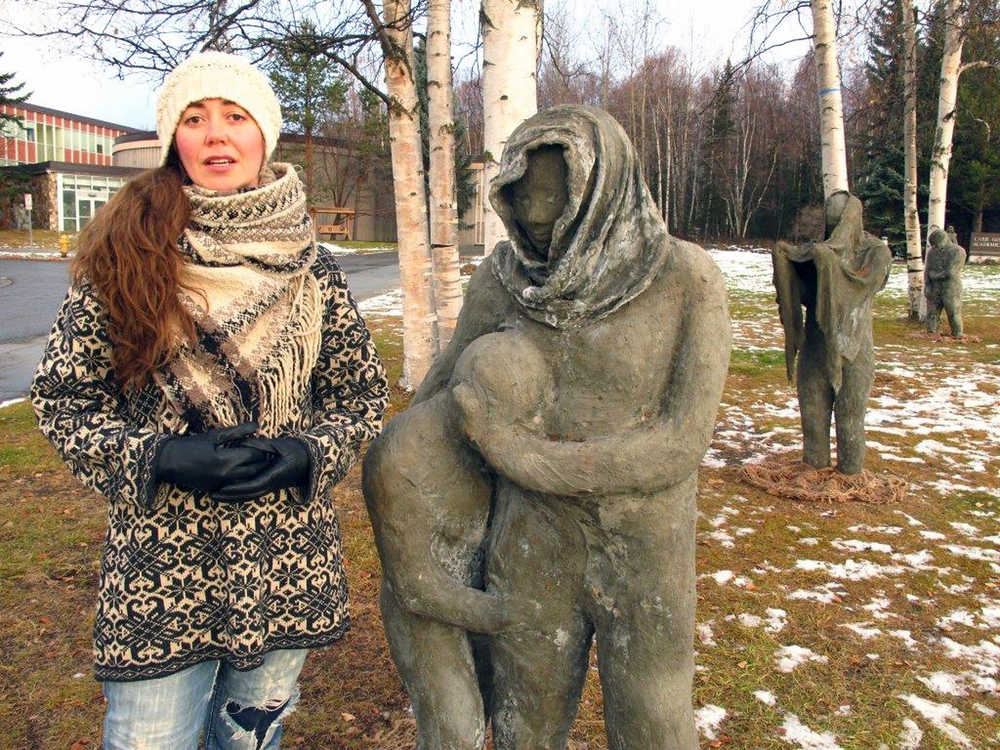ANCHORAGE — Creators of a public art installation damaged by tides and high winds at a beach in Alaska’s largest city have returned with 43 statues that survived and have been restored.
This time, the sculptures are scattered in front of two buildings at Alaska Pacific University in Anchorage — far away from the tides — for a two-month exhibit that officially opens Friday. The display, like last year’s installation, illustrates the strength and beauty of human vulnerability.
Sarah Davies, the lead artist in last year’s so-called 100-Stone project at Point Woronzof, teamed up this summer with the Alaska Humanities Forum to create a fund aiming to support similar endeavors by other artists. The forum did not participate in last year’s exhibit.
The seed money for the new “HUMAN:ties” fund will come from selling the concrete statues to groups and individuals. People also can sponsor any statues that find permanent homes in public settings.
Davies said the goal is to match dollar-for-dollar the $40,000 in funding received for last year’s project from various foundations. Only if that goal is met would she take anything for living expenses, she said.
“What I get is knowing that these statues have safe and loving forever homes,” she said Wednesday. “These are our family. These statues have taken on very real lives with very real stories.”
[Giving form to vulnerability: 100Stone artist kicks off series in Juneau highlighting mental illness]
The theme of human frailty is personal for Davies, who was sexually abused as a child. The Associated Press generally does not identify victims of sexual assault, but it is doing so in this case because she is speaking openly about her situation.
To her, the statues, which are based on castings of real people dealing with trauma, speak to the frailty of emotionally wounded people, but also to those who may not understand.
“We live in a world where there’s sort of this cult of happiness,” Davies said. “And that bothers me — a lot — because not everyone lives at that end of the emotional spectrum.”
Humanities Forum President Kameron Perez-Verdia said his organization has grant programs to support artists, historians and others, but he noted that the fund is a bit different in its approach. When Davies proposed her idea to the group, forum officials were intrigued, he said.
“Her work is so much about telling the stories of Alaskans who have struggled in a variety of ways,” Perez-Verdia said. “And this idea of human ties, or the humanities, is really, from our perspective, it’s about telling our stories.”

